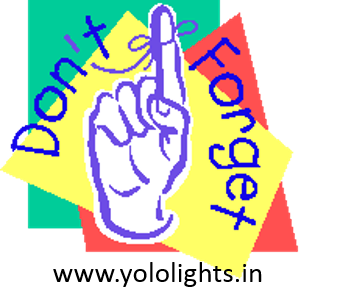What is Mnemonics?
Mnemonics are memory devices that help learners recall larger pieces of information, especially in the form of lists like characteristics, steps, stages, parts, phases, etc. We knew back in 1967 from a study by Gerald R. Miller that mnemonics increased recall. He found that students who regularly used mnemonic devices increased test scores up to 77%!
Many types of Mnemonics exist and which type works best is limited only by the imagination of each individual learner. The 9 basic types of mnemonics includes:
1. Music Mnemonics
Songs and jingles can be used as a mnemonic. A common example is how children remember the al-phabet by singing the ABC’s.
2. Name Mnemonics
The first letter of each word is combined into a a new word. For example: VIBGYOR (or ROY G BIV) for the colors of the rainbow or HOMES for the Great Lakes.
3. Expression or word Mnemonics
The first letter of each word is combined to form a phrase or sentence –
4. Model Mnemonics
A model is used to help recall information.
5. Ode Mnemonics
The information is placed into a poem or doggerel, — e.g. ‘Note socer, gener, liberi, and Liber god of revelry, like puer these retain the ‘e (most Latin nouns of the second declension ending in -er drop the -e in all of the oblique cases except the vocative, these are the exceptions).
6. Note organization Mnemonics
The method of note organization can be used as a memorization technique.
7. Image Mnemonics
The information is constructed into a picture — e.g. the German weak declension can be remembered as five ‘-e’s’, looking rather like the state of Oklahoma in America, in a sea of ‘-en’s’.
8. Connection Mnemonics
New knowledge is connected to knowledge already known.
9. Spelling Mnemonics
An example is “i before e except after c or when sounding like a in neighbor and weigh
People believe that they have have a limited memory and hence can store only a certain amount of data and that those who are doing better are exceptionally gifted people or are born genius. Truth is, they are using more than one faculty to memorize things whilst we may be using just one. The capacity of human brain in terms of computer storage is 2 quintillion bits or in other words 200 crore giga bytes. Simply put, if our brain were a video recorder recording every video and sound, then for the memory to be completely full, the video camera would have to run for 300 years.
The problem is not with the memory. The problem is with the storage system, or the indexing system of the brain which we hardly ever train. Although the information is very much there, due to our negligence of not labeling it properly before storing, we are not able to recall.
With the help of Mnemonics as a tool, the students who have to memorize large amounts of data, long answers, formulae, history dates just to name a few. The recall time using the technique of Mnemonics is reduced by half hence leaving the student a lot of time to cover extra topics and prepare additional things for the same exam. With Mnemonics it would take about 2 and half minutes to memorize a 50 digit number and it would take about 4 minutes to memorize a list of 30 random items.
What we do at our Memory Workshops ?
Well we teach you the secrets and techniques to memorize, associate, relate and sustain large chunks of information, which could be your credit card numbers, passwords, bank account numbers, periodic tables for science students, mathematics formulae, social science answers, large texts, long lists of words/ names and much more. It is a boon for students preparing for competitive exams and actually a blessings for everyone who takes the learning.





